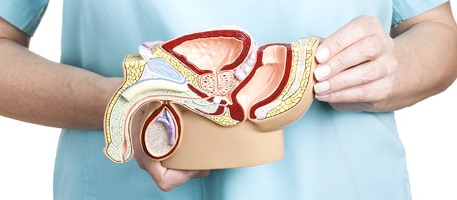
PROSTATE CANCER
Prostate cancer is one of the most common malignant neoplasms in men. Every year, 1.3 million new cases of prostate cancer are diagnosed worldwide. More than 1,200 newly diagnosed cases of prostate cancer are registered in Kazakhstan, i.е. 6.6 cases per 100 thousand population. Malignant pathology is more common in Caucasian men than in Asian men.
Causes and risk factors
Worldwide, the incidence and mortality from this malignant pathology is steadily increasing. The question of the cause of the development of prostate cancer remains open, since the causes of the disease have not been fully studied. However, some risk factors for PCa have already been identified:
chronic inflammation of the prostate (prostatitis);
benign tumors of the prostate - adenoma, cysts;
congestion in the prostate (with rare or excessive sexual intercourse);
hypodynamia, also leading to congestion;
obesity, overnutrition;
frequent use of alcohol;
smoking;
exposure to vapors of paints and solvents, fuels and lubricants, rubber products, printing dust, etc .;
exposure to ionizing radiation;
hereditary predisposition.
Symptoms
In the initial stages, prostate cancer is not clinically manifested. The development of symptoms is associated with an increase in the size of the prostate and the appearance of regional and distant metastases. The usual common symptoms of prostate cancer are:
problems with urination;
violation of urination up to complete urinary retention;
obstructed outflow of urine at the beginning or at the end of urination;
frequent urination, especially at night;
sluggish urine stream;
pain or burning during urination;
erectile dysfunction;
blood in urine or seminal fluid;
pain in the bones (lumbosacral spine, thigh, lower leg, etc.).
In most cases, these symptoms are not a sign of cancer. With benign prostatic hyperplasia, infection or other diseases, the same symptoms can be.
Diagnostic methods for suspected prostate cancer:
The most informative method of laboratory diagnostics is an analysis for a tumor marker - a study of the level of prostate-specific antigen (PSA). An increased amount of protein indicates an inflammatory process or the development of oncology.
Ultrasound - during the study, the gland is scanned through the abdominal cavity. The informativeness and effectiveness of ultrasound depends on the anatomical features of the patient.
TRUS - an ultrasound transducer is passed through the rectum directly to the prostate gland. Contraindications: inflammation of the rectum, hemorrhoids in acute form.
After determining the increase in the size of the prostate gland and detecting an increase in the level of PSA, a histology (biopsy) is prescribed to clarify the diagnosis. The patient takes tissue samples from several parts of the prostate. Histological examination determines the aggressiveness of the tumor and the stage of cancer.
Magnetic resonance imaging. As a result of scanning the human body, a three-dimensional image of the prostate gland and the entire genitourinary system is obtained. MRI diagnostics is especially effective in the early stages of cancer. The decoding of the analysis gives an idea of the pathological changes in the tissues of the gland and the presence of infiltration in the soft tissues.
Positron emission tomography (PET - CT) - scanning is carried out after the introduction of special pharmaceutical preparations: choline, fluorodeoxyglucose, metoin and ammonium. PET examination makes it possible to see structural changes, to determine the presence of disturbances in the functioning of internal organs.
Recommendations of doctors for the prevention of prostate cancer:
Many risk factors for prostate cancer can be avoided by following basic guidelines.
Primary Prevention:
Physical activity;
Refusal of addictions - alcohol, tobacco;
Healthy nutrition: the content in the diet of a large amount of plant foods containing fiber, vitamins, useful minerals; refusal of excessive consumption of fatty and meat products, spices,
Harmonization of sexual contacts in accordance with age recommendations.
Secondary prevention:
Regular examination of men after 45 years by a urologist with an ultrasound of the prostate, an analysis for PSA (prostate-specific antigen);
Examination by a urologist after 45 years - 1 time per year;
Blood test for PSA - 1 time in 8 years (with normal indicators). If a brother or father had prostate cancer - 1 time in 2 years.
If you have symptoms or want to be examined and find out about your health, you can contact our Center by calling the Call Center 8(7172)702-911.




